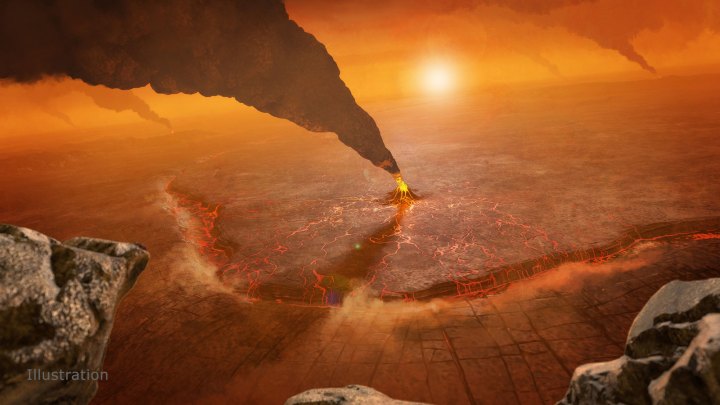Venus might be our neighbor in the solar system, but there’s a lot we still don’t know about the planet. That’s partly because of its high temperatures and atmospheric pressure which make it difficult to send probes there, and also because its thick atmosphere makes it difficult to observe from orbit. But researchers have recently dug through data from a decades-old NASA mission to learn about the strange geological processes which renew its surface.
One of the open questions about Venus is how it loses its heat, as, unlike Earth, Venus doesn’t have tectonic plates. By looking at data from the Magellan mission, researchers discovered that the outer layer of Venus’ surface, called the lithosphere, may be considerably thinner than previously thought and could let heat escape from the planet’s hot core.

“For so long we’ve been locked into this idea that Venus’ lithosphere is stagnant and thick, but our view is now evolving,” said lead researcher Suzanne Smrekar of NASA’s Jet Propulsion Laboratory in a statement. “While Venus doesn’t have Earth-style tectonics, these regions of thin lithosphere appear to be allowing significant amounts of heat to escape, similar to areas where new tectonic plates form on Earth’s seafloor.”
The researchers looked at images of round features called coronae which Magellan saw on the planet’s surface, and by looking at the depths of ridges around them they could estimate the thickness of the lithosphere in these regions. They found that the lithosphere around these features was as thin as 7 miles deep.
This can help to explain a strange feature of Venus: Its surface looks young, as it lacks the many old impact craters you would expect to see on a planet of its age. There has a lot of volcanic activity in Venus’s past and there could still be volcanic activity there today, so one theory is that every few hundred million years the entire surface of the planet is melted and reformed in epic events called resurfacings — which is why it appears to be young. The thinness of the lithosphere allowing heat to flow through it supports that idea.
“What’s interesting is that Venus provides a window into the past to help us better understand how Earth may have looked over 2.5 billion years ago. It’s in a state that is predicted to occur before a planet forms tectonic plates,” said Smrekar.
An upcoming NASA mission called VERITAS will investigate the issue further and is set to launch in the 2030s. “VERITAS will be an orbiting geologist, able to pinpoint where these active areas are, and better resolve local variations in lithospheric thickness. We’ll even be able to catch the lithosphere in the act of deforming,” said Smrekar. “We’ll determine if volcanism really is making the lithosphere ‘squishy’ enough to lose as much heat as Earth, or if Venus has more mysteries in store.”
The research is published in the journal Nature Geoscience.



